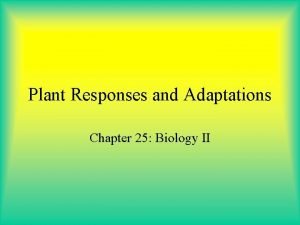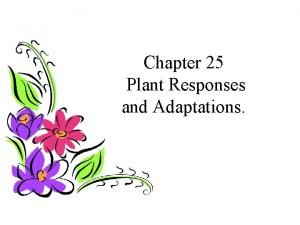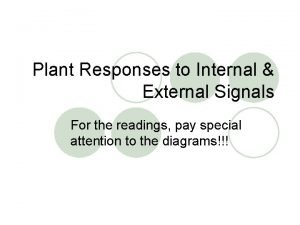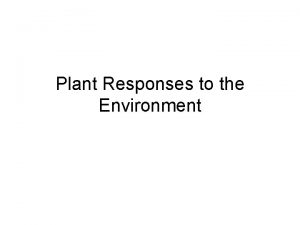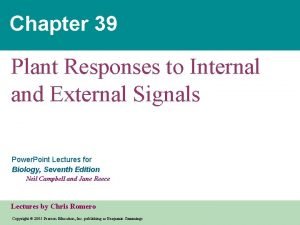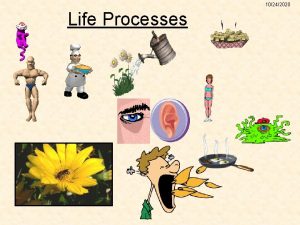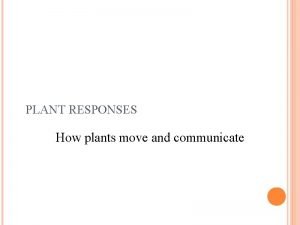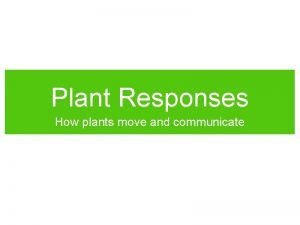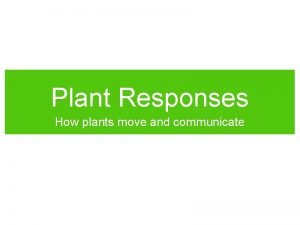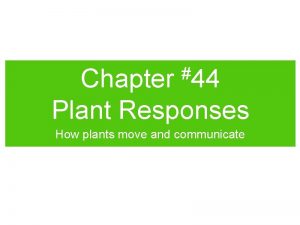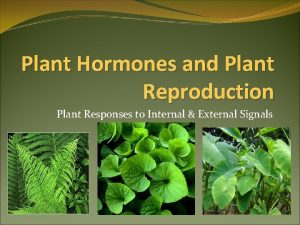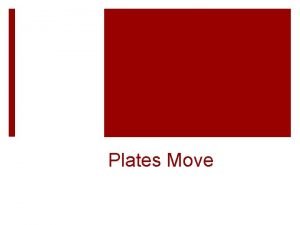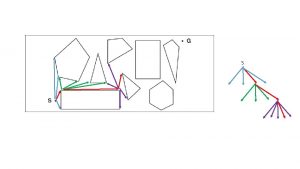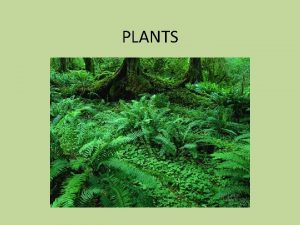PLANT RESPONSES How plants move and communicate PLANT













- Slides: 13

PLANT RESPONSES How plants move and communicate

PLANT HORMONES Plant hormones can be divided into two classes: Growth promoters: Auxins, Gibberellins, Cytokinins Growth inhibitors: Ethylene gas, Abscisic acid

GROWTH PROMOTERS Hormones can promote plant growth in two ways: Stimulating cell division in meristems to produce new cells. Stimulating elongation in cells.

AUXIN ACTIVITY Auxins stimulate genes in cells associated with plant growth.

AUXIN ROLES Auxins carry out multiple roles having to do with plant growth including: Tropisms Apical dominance Growth of adventitious roots Fruit growth

TROPISMS Tropisms are the growth of a plant toward or away from a stimulus, including: Phototropism: in response to light Gravitropism: in response to gravity Thigmotropism: in response to touch

TROPISMS: CELL ELONGATION In general, tropisms involve cell elongation or suppression of cell elongation on one side of a plant, causing the plant to grow in a particular direction.

PHOTOTROPISM Look at the sprouts in the bottom picture and the explanatory diagram at the top. Explain why the sprouts are all leaning in the same direction.

GRAVITROPISM In this Impatiens plant, shoots grow upwards and roots grow downwards in response to gravity. On which side of the shoot and root do you think auxins are more concentrated?

GRAVITROPISM IN SHOOTS In shoots, auxins are more concentrated on the lower side of the stem, causing the cells there to elongate. Why is this gravitropism and not phototropism?

GRAVITROPISM IN ROOTS In roots, however, auxin concentration on the lower side of the root suppresses cell elongation. The upper side of the root continues to grow, causing the roots to bend downward.

PLASTIDS AND GRAVITROPISM How does a root “know” which way is down? Plastids, particularly leucoplasts, in the root cap cell tend to settle on the bottom side of the cell. This stimulates the release of auxins.

THIGMOTROPISM In some plants, vining stems or tendrils will grow in response to touch. Which side of the tendril is elongating? Where might the auxin be? (Remember, this is the shoot system. )
 What has roads but no cars rivers but no water
What has roads but no cars rivers but no water Chapter 25 plant responses and adaptations
Chapter 25 plant responses and adaptations Chapter 25 plant responses and adaptations answer key
Chapter 25 plant responses and adaptations answer key Plant hormones and responses
Plant hormones and responses Plant hormones and responses
Plant hormones and responses Plant responses to internal and external signals
Plant responses to internal and external signals The stationary life
The stationary life Seed germination
Seed germination Plant water balance
Plant water balance Life processes of living things
Life processes of living things The move-it company has two plants
The move-it company has two plants Classify non flowering plants
Classify non flowering plants Reproduce by spores
Reproduce by spores Non vascular vs vascular plants
Non vascular vs vascular plants

